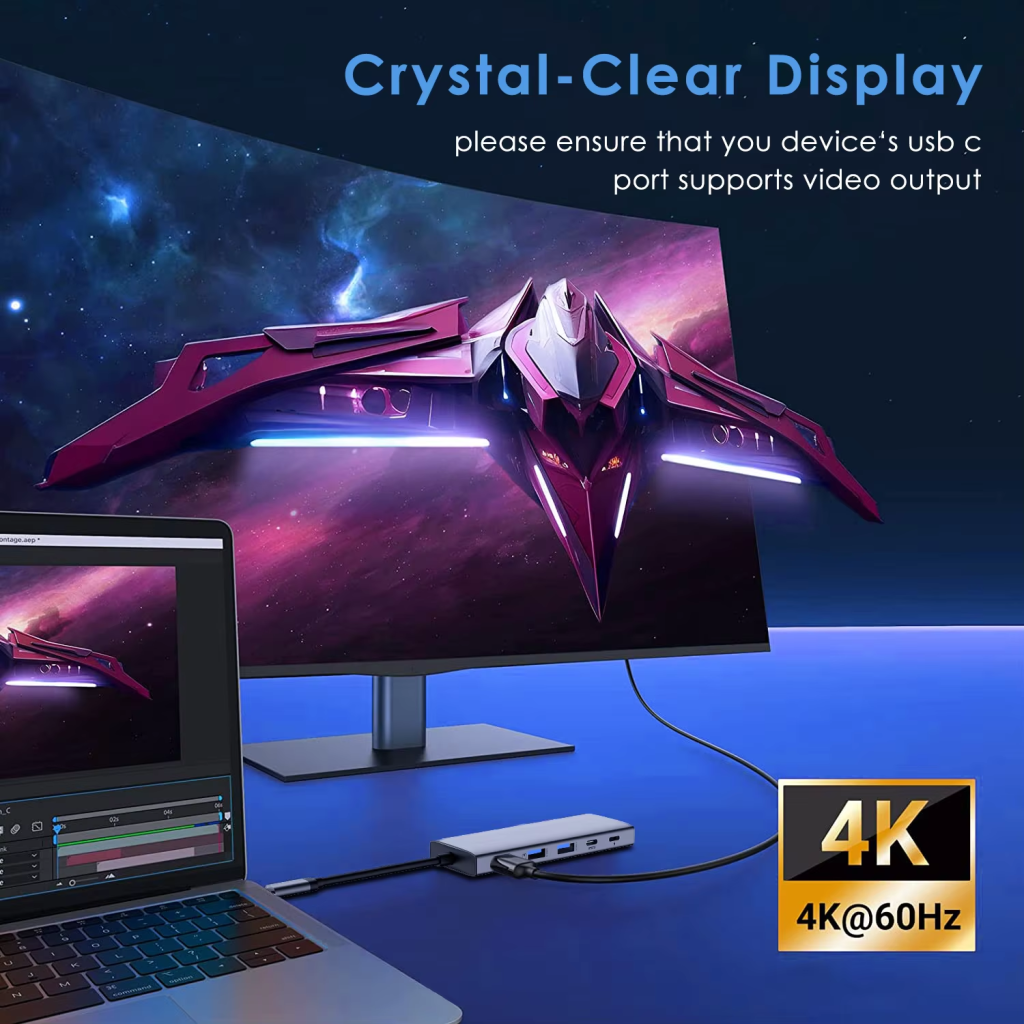What Problems/Pain Points Will the USB-C Hubs Solve for the users?
USB-C Hubs can address several key problems and pain points for their potential customers across different user segments and industries. Here’s how:
1. Office Workers
- Limited Ports on Laptops: Many modern laptops, especially ultrabooks, have a limited number of ports, often only one or two USB-C ports. A USB-C Hub provides additional ports (USB-A, HDMI, Ethernet, etc.), allowing users to connect multiple peripherals without sacrificing functionality.
- Connectivity in Meetings: Office workers often need to connect to projectors, external monitors, or other devices during meetings. A USB-C Hub simplifies this process, offering quick and easy connectivity options.
- Data Transfer and Power Delivery: The ability to transfer data while charging the device through a single USB-C port can streamline workflows and reduce cable clutter on the desk.
2. Creative Professionals
- Multi-Device Setup: Creative professionals often need to work with multiple devices simultaneously, such as external monitors, drawing tablets, and storage devices. A USB-C Hub can integrate these devices, making it easier to manage a complex setup.
- High-Speed Data Transfer: Large files, such as high-resolution photos and videos, require fast transfer speeds. A USB-C Hub with USB 3.0/3.1 ports or Thunderbolt 3/4 support can significantly reduce file transfer times.
- Port Accessibility: Accessing SD/TF card slots and USB-A ports directly on a USB-C Hub allows photographers and videographers to quickly transfer files without needing separate card readers or adapters.
3. Business Professionals
- Portability and Versatility: Business professionals who travel frequently or work in multiple locations benefit from a portable USB-C Hub that allows them to connect to various devices (e.g., projectors, printers, external monitors) in different settings.
- Fast Charging on the Go: USB-C Hubs with Power Delivery (PD) can charge laptops or smartphones quickly, ensuring that devices remain powered throughout long meetings or travel.
- Network Connectivity: In environments with unreliable Wi-Fi, a USB-C Hub with an Ethernet port ensures a stable and secure wired internet connection.
4. Students and Educators
- Enhanced Learning and Teaching Tools: Students and educators often need to connect laptops to projectors, external monitors, or other multimedia devices for presentations. A USB-C Hub provides the necessary connectivity options.
- File Sharing and Backup: Students can quickly back up their work or share files using external storage devices connected via the Hub, reducing the risk of data loss.
- Improved Ergonomics: By connecting to an external monitor, keyboard, and mouse, students and educators can create a more ergonomic setup, reducing strain during long study or teaching sessions.
5. Gamers
- Latency and Connectivity Issues: Gamers require stable and fast internet connections. A USB-C Hub with an Ethernet port can reduce latency issues, providing a smoother gaming experience.
- Peripheral Management: With multiple gaming peripherals like controllers, headsets, and external storage, a USB-C Hub helps manage these connections efficiently without constantly swapping devices.
- Video Output for Larger Displays: Gamers can connect their laptops or PCs to larger monitors or TVs via HDMI, enhancing the visual experience during gameplay.
6. IT Professionals
- Multiple Device Testing: IT professionals often need to connect multiple devices for testing, debugging, or deployment. A USB-C Hub allows them to easily manage and switch between devices.
- Data Transfer and Backup: Fast and reliable data transfer between devices is crucial for IT work. A USB-C Hub with high-speed ports can significantly improve efficiency.
- Network Configuration: When setting up or troubleshooting networks, IT professionals can use a USB-C Hub with an Ethernet port to quickly establish a wired connection.
Summary of Problems Solved
USB-C Hubs address the following pain points:
- Insufficient connectivity options on modern, port-limited devices.
- Slow data transfer speeds for large files.
- Inability to charge and use devices simultaneously through a single port.
- Connectivity issues in meetings, classrooms, and travel situations.
- Unstable wireless connections, particularly for online gaming or business activities.
- Ergonomic challenges when working with a single screen or a limited workspace.
Overall, USB-C Hubs offer a versatile solution to enhance productivity, connectivity, and user experience across various fields and user segments.





